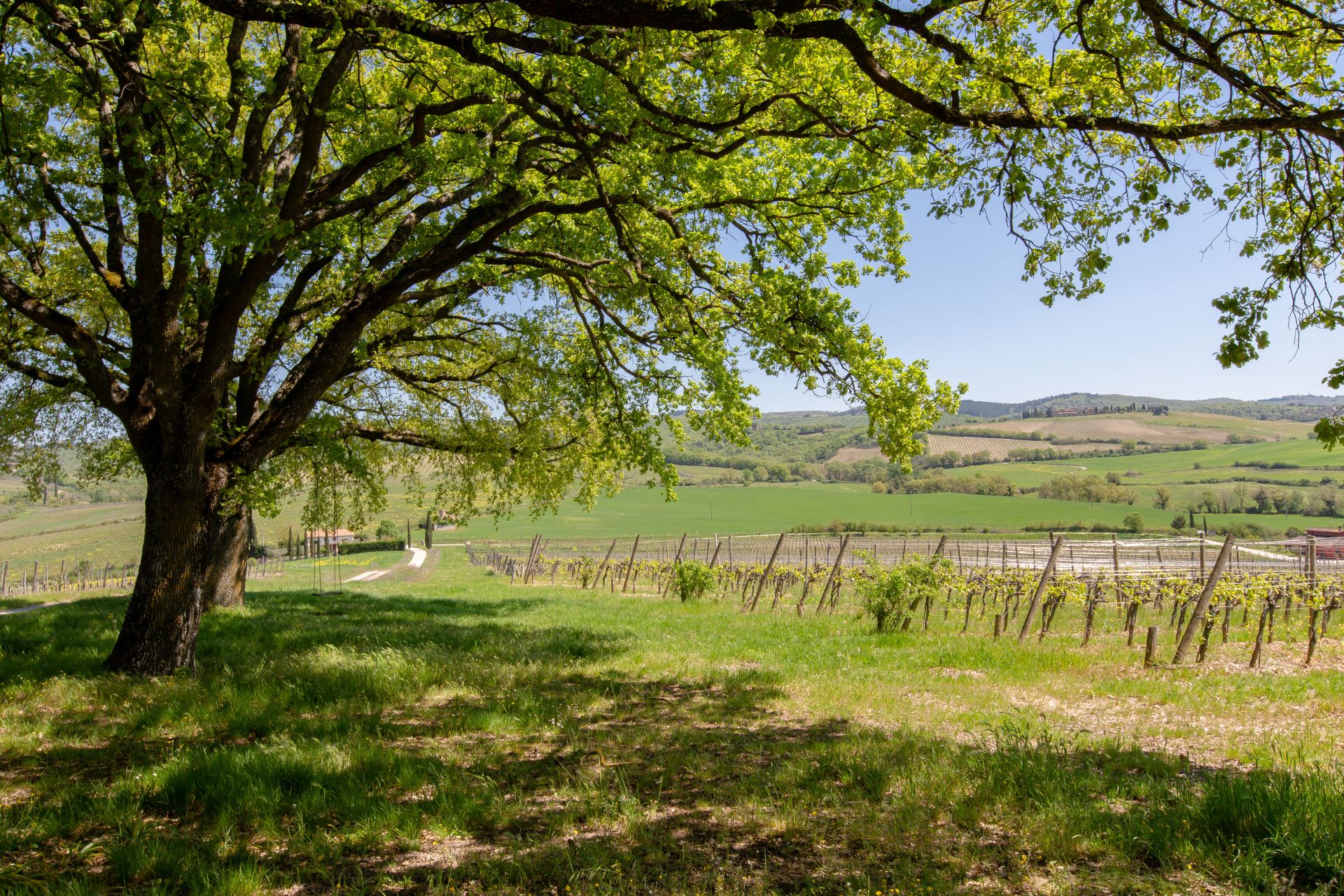A very interesting article by one of our group’s leading professionals, notary Daniele Migliori, who will provide you with valuable information on agricultural pre-emption (prelazione agraria).
The “agrarian pre-emption” (prelazione agraria): a fact that presents many unknowns that should be resolved definitively from the first moment of negotiation of the sale of a property subject to this type of pre-emption.
The main problem in this field is the extreme poverty of the existing rules, which has given rise to an endless jurisprudence, characterised by a large number of judgments in which the courts and, most recently, the Supreme Court have been called upon to resolve the most abstruse problems.
Art. 8 of Law no. 590 of 26 May 1965 states that the tenant, sharecropper, settler or co-participant, all other things being equal and provided that they have been farming the land for at least two years, have the right of pre-emption in the event of the transfer of the land for valuable consideration.
The owner of the land must notify, by registered letter to be sent to the person entitled, the preliminary contract of sale in which the name of the purchaser, the price and all other agreements must be indicated. The farmer must exercise his right within 30 days of receiving the communication.
Failure to notify the person entitled entitles him to exercise his right of redemption against the purchaser within a period of one year from the transcription of the deed of sale.
It follows from the literal wording of the rule that the first person entitled to the right of pre-emption is therefore the person who cultivates the land directly.
The prerequisites for the emergence of his right are:
- that cultivates the land under a valid contract (rent, sharecropping, colony, etc);
- that has been farming for at least two years;
- that in the last two years he has not sold other plots of land with a taxable value of € 0.52;
- that the property for which he intends to exercise the pre-emption right, in addition to others already owned by him, does not exceed three times the surface area corresponding to the working capacity of his family.
The qualification of direct cultivator is not linked to registration in a special register.
In this regard, the most recent case law of the Court of Cassation has confirmed that it is not necessary to be entered in the Companies Register or in other registers or lists, since such proof may also be provided by witnesses.
Nevertheless, over the course of time, numerous legislative interventions have extended the list of persons entitled to pre-emption rights, introducing additional figures. As of today, therefore, we can affirm that, from a subjective point of view, when we speak of persons entitled to pre-emption, we must refer to a broader concept than that originally provided for, to the point that the following persons must be considered holders of the right of pre-emption:
- a person who, by cultivating the land directly with his own and his family’s labour, meets the above requirements;
- the professional farmer (I.A.P.);
- agricultural cooperatives of land farmers;
- agricultural partnerships.
Finally, the right of pre-emption is excluded for corporations, even in the presence of partners who are direct cultivators. This applies both in the case of tenants and neighbours.
Consequently, the investigation work that the professional will be called upon to carry out on the territory in order to ascertain the existence of the so-called subjective requisites of the neighbour is of the utmost importance, it being reiterated that the lack of enrolment in some cultivators’ register does not, however, exclude the right of pre-emption.
In the hypothesis that the land to be sold is granted to several farmers, each holding a separate contract, it is considered that each farmer can exercise pre-emption over the whole, tending to exclude, as will be seen below, the possibility of exercising partial pre-emption. If then, more than one of them wished to exercise this right at the same time, recourse would have to be made to the preferential criteria set out in Legislative Decree no. 228 of 18 May 2001, which will be mentioned later.
Having examined the case of the direct grower present on the land, we must now analyse the most frequent hypothesis in practice: that of the pre-emption due to the neighbours.
Article 7 of Law no. 817 of 14 August 1971 extended the pre-emption right also to direct farmers who own land bordering on the land offered for sale, provided that no sharecroppers, farmers, tenants, joint owners or emphyteusis direct farmers live on the land. As we have seen, subsequent legislative interventions have extended this right also to agricultural cooperatives and agricultural partnerships.
This situation poses even more problems that the professional is called upon to resolve when buying or selling.
First of all, it must be observed that the pre-emption right accrues to the neighbours only in the event that there is not already a cultivator on the property (according to the definition we have already given, and in one of the cited agrarian contracts).
Therefore, the presence on the property being sold of a cultivator who has not exercised this right, excludes the right of the neighbours, even when the latter has not been able to exercise the pre-emption right because he has not cultivated the property in the previous two years.
The same applies if the object of the exploitation by the third party is only a fraction of the entire property offered for sale. As will be seen, in fact, the partial exercise of pre-emption is generally excluded, being admitted only in particular cases.
From a subjective point of view, when speaking of neighbouring parties having a right of pre-emption, reference should be made to the same definition as above. Owners of neighbouring land who are:
- a direct farmer who is the owner of neighbouring land on which there are no sharecroppers, tenant farmers, tenant farmers, tenant farmers or emphyteusis;
- professional farmer (I.A.P.);
- agricultural cooperatives of land farmers;
- agricultural partnerships.
It is noted that the recent Article 8 of Law No. 36 of March 15, 2024, containing Provisions for the Promotion and Development of Youth Entrepreneurship in the Agricultural Sector, which came into effect on April 10, 2024, establishes priority criteria in cases where there are multiple neighboring farmers entitled to the right of pre-emption as provided by the aforementioned Law No. 817/1971. The regulation stipulates that, in such cases, among multiple eligible parties, preference should be given to:
- the owner of the neighboring plot who is an agricultural entrepreneur over the age of eighteen and under the age of forty-one;
- in the case of partnerships and cooperative companies, at least half of the partners must be agricultural entrepreneurs over the age of eighteen and under the age of forty-one;
- in the case of corporations, at least half of the share capital must be held by agricultural entrepreneurs over the age of eighteen and under the age of forty-one, and at least half of the board members must consist of the same group.
If the age criterion is not decisive, the legislature favors the criterion of competence and specialization level. Therefore, priority is given to young direct farmers who meet the requirements specified in Article 4, paragraph 6, of Regulation (EU) 2021/2115 of the European Parliament and of the Council, dated December 2, 2021, as well as in the relevant national implementing legislation.
From an objective point of view, when reference is made to neighbouring properties, this means two units that have the possibility of forming a single compendium. In the past, one spoke of functional contiguity, believing that the right arose when the two properties were functionally connected, even if distant or divided by natural elements. Today, on the contrary, the principle that such proximity must be substantial prevails.
In fact, over time, a solid body of case law has developed in favour of excluding the right of pre-emption when there is an element between the two properties which excludes a material and stable contiguity. In particular, it has been ascertained that the right of pre-emption does not arise when there is a neighbouring road, even if not open to the public, a watercourse, a ditch or any other element interrupting the boundary between the two properties.
Lastly, we would like to point out a recent ruling by the Court of Cassation which established the principle that:
“the right of redemption of the direct farmer who is the owner of the neighbouring land, constituting a restriction on the movement of agricultural property and on his freedom to negotiate, applies only in the case of neighbouring land in the legal sense, that is to say land characterised by physical and material contiguity, by mutual contact along the common demarcation line, and cannot be extended to the different hypothesis of so-called functional contiguity“.
Thus, as things stand at present, it can be said that the presence of an element interrupting the boundary line between the two properties effectively excludes the possibility of the neighbour exercising pre-emption.
A further problem arises when there is more than one person entitled to pre-emption at the same time. In such a case, the hypothesis may arise that more than one person expresses the will to exercise pre-emption.
Previously, case law was oriented towards admitting the partial exercise of pre-emption. In practice, it was held that each beneficiary (direct tenant/user of the land or neighbour) could exercise such right in proportion to the activity carried out on its land.
Today this principle can only be used in a residual form and only when the question cannot be resolved on the basis of the principles laid down by art. 7 of Legislative Decree no. 228 of 18 May 2001, which states that:
“For the purposes of exercising the right of pre-emption or redemption referred to, respectively, in Article 8 of Law No 590 of 26 May 1965, as subsequently amended, and in Article 7 of Law No 817 of 14 August 1971, in the case of several neighbouring entities, the following shall be considered preferential criteria, in the order of precedence, in the presence as participants in their respective undertakings of direct farmers and main occupiers aged between 18 and 817, in the case of several neighbouring entities, the preferential criteria are, in order, the presence as participants in their respective undertakings of direct cultivators and main contractors between 18 and 40 years of age or in cooperatives for the joint management of the land, the number of such persons and their possession of adequate knowledge and skills within the meaning of Article 8 of Council Regulation (EC) No 1257/99 of 17 May 1999“.
In the event that the neighbouring property is owned by more than one person, even in respect of rights in rem (e.g. bare ownership and usufruct), each of them will have the corresponding right of pre-emption and the preliminary contract must be notified to them.
At this point the question arises as to whether the owner of the right, be it the direct user of the land or a neighbour, is entitled to exercise pre-emption only partially: that is, whether it is possible for one or more owners to break up the property, acquiring only parts of it.
The Court of Cassation once again had to rule on this matter and reiterated the principle that:
“Just as the original owner cannot be deprived of the right to dispose of the entire estate, so he cannot be forced to accept a price lower than that agreed with the third party“.
In practice, the owner’s right to sell the entire estate prevails over the neighbour’s right to acquire ownership of a portion of it.
The Court of Cassation itself has therefore reiterated the impossibility of a fractional purchase when the land is intended to be used for the operation of a single business or the limited exercise of pre-emption would cause pecuniary harm to the seller who would receive a lower price than that agreed upon, remaining with only part of the property. At most, the exercise of a partial pre-emption could be considered admissible only when the portion affected by the claimant’s action is objectively and functionally autonomous from the rest of the compendium, and its purchase does not prejudice the seller’s rights to dispose of the whole property for the overall agreed price.
Finally, a relevant issue concerns the possibility of waiving the exercise of the right of first refusal.
Generally speaking, the prevailing view does not admit a so-called “general” prior waiver. The person entitled may not renounce before a buyer has been found and a price has been agreed upon. The communication must be in writing, as mere oral communication is not sufficient. The same applies to the declaration of renunciation which, for purposes of proof, must be made in writing by the assignee. On the other hand, it is accepted that the person entitled waives the pre-emption right by participating directly in the sale, issuing a declaration to that effect.
In any event, it is considered that any form of waiver cannot disregard complete and detailed information on the terms of the contract, to be provided to the person entitled.
Great Synergy: the network of trusted companies and professionals to realise your real estate projects
In addition to the real estate brokerage services offered by Great Estate, thanks to Great Synergy you can get everything you may need to manage, income or customise your prestigious property.
Read also:









